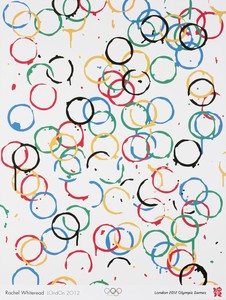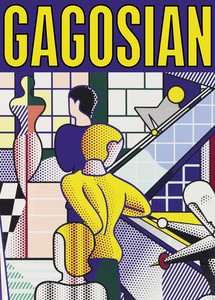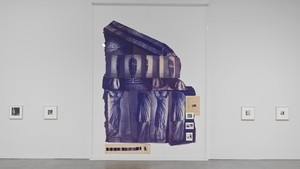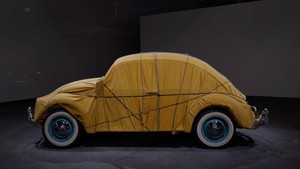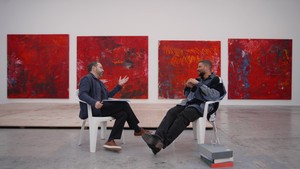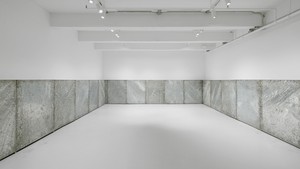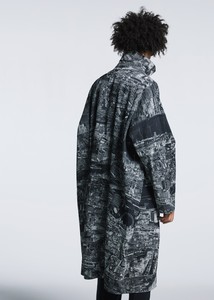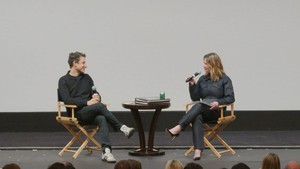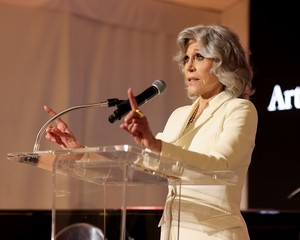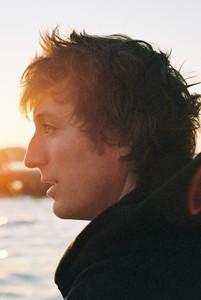Two pioneering artists separated by a generation, Diane Arbus (1923–1971) and Cady Noland (b. 1956) have probed the power of the everyday to reveal the dark underpinnings of American culture and society. In her unflinching photographs of the 1960s and 1970s, Arbus documented a challenged and changing nation, while Noland’s disjunctive sculptures and installations of the 1980s and 1990s literally embody the emptying-out of values in contemporary American life.
Representing distinctions between public and private, contrived and real, Arbus’ photographs reveal alternative histories to the idealized postwar American narrative. Beginning in the mid-1950s, Arbus found many subjects in New York, drawing equally from subculture and mainstream. During visits to Pennsylvania, Florida and California, she captured diverse domestic rituals, as well as local events and festivals. Some photographs offer prosaic yet touching glimpses of modern life: a teenage couple, awkward in oversized formal attire; a decorated Christmas tree in a suburban Long Island living room. Others explore social taboos and hint at the pervasiveness of violence and perversity: a nudist family, lounging in a grass field, gazes confidently at the camera; a grimacing boy gripping a toy grenade evokes the horrors of war in the benign setting of Central Park. Insightful dispatches from a transitional era, Arbus’ photographs epitomize the psychology of a post-war nation in flux.
Cady Noland has been described as a “dark poet of the national unconscious.” Like Arbus, she mines quotidian culture, but typically through the use of popular media headlines and generic cultural artifacts rather than human subjects. Implicating viewers in her sculptural situations, Noland shows contemporary reality to be alienating and dystopic. Urban refuse such as tires, chain-link fencing and slabs of beer cans are the building blocks of her sculptural installations. In Trashed Mailbox (1989), a domestic mailbox sits atop a shopping basket of empty bottles, oil cans, and a crumpled American flag to convey the ravaging of the American dream. In The Mirror Device (1987), a pair of handcuffs and a gun, clamped to a metal bar that hangs in front of a vanity mirror, place the viewer in the role of perpetrator. Noland’s work often treats the normalization of violence, presenting images of heroes and anti-heroes—a cowboy, terrorist-heiress Patty Hearst, psychopath Charles Manson, assassin Lee Harvey Oswald—as silkscreened cut-outs propped against the wall. The decline of the American psyche, Noland suggests, is rooted in the media’s exploitation of society's best and worst proclivities.
Diane Arbus was born in 1923 in New York City, where she died in 1971. Public collections include Metropolitan Museum of Art, New York; Museum of Modern Art, New York; Museum of Contemporary Art, Los Angeles; Tate Modern, London; and Centre Georges Pompidou, Paris. Arbus was the first American photographer to have work exhibited at the Biennale di Venezia (1972). Major museum exhibitions include Museum of Modern Art, New York (1972); Seibu Museum, Tokyo (1973); "Diane Arbus: Revelations," San Francisco Museum of Modern Art (2003, traveled to Los Angeles County Museum of Art; Museum of Fine Arts, Houston; Metropolitan Museum of Art, New York; Museum Folkwang, Essen; Victoria and Albert Museum, London; CaixaForum, Barcelona; and Walker Art Center, Minneapolis, through 2006); and “Diane Arbus,” Galerie nationale du Jeu de Paume, Paris (2011, traveled to Fotomuseum, Winterthur; Martin-Gropius-Bau, Berlin; and Foam, Amsterdam, through 2013).
Cady Noland was born in 1956 in Washington, D.C., and lives and works in New York. Public collections include Solomon R. Guggenheim Museum, New York; Museum of Contemporary Art, Los Angeles; Museum of Contemporary Art, Chicago; San Francisco Museum of Modern Art; Migros Museum für Gegenwartskunst, Zurich; Museum für Moderne Kunst, Frankfurt; and Le Consortium, Dijon. Major museum exhibitions include Museum Boijmans Van Beuningen, Rotterdam, The Netherlands (1995); Wadsworth Atheneum Museum of Art, Hartford, Connecticut (1996); “Strange Abstraction: Robert Gober, Cady Noland, Philip Taaffe, Christopher Wool,” Touko Museum of Contemporary Art, Tokyo (1991); Documenta 9, Kassel (1992); “MONO: Olivier Mosset, Cady Noland,” Migros Museum für Gegenwartskunst, Zurich (1999); “Cady Noland: The American Dream,” De Hallen Haarlem (2010–11); and “Regarding Warhol: Sixty Artists, Fifty Years,” Metropolitan Museum of Art, New York (2012).
